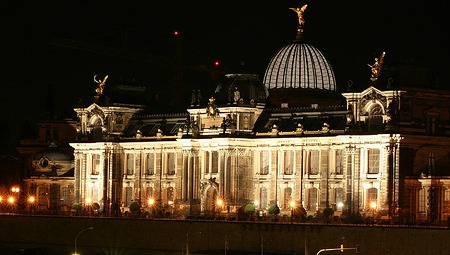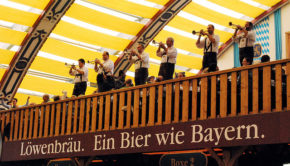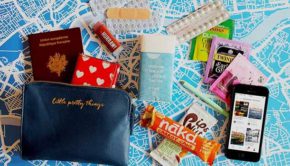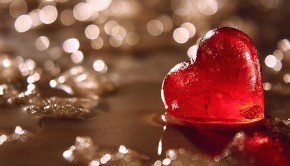Weekend in Dresden: tips and ideas
Speaking of Dresden, the one thing that comes up again and again is the reminiscence of a city flattened by Allied bombers and ended up behind the Iron Curtain. 77 years have passed since Dresden’s historic Altstadt was razed to the ground by a shower of bombs during World War II: hope, goodwill… and time, have helped the city to rise from the rubble, and reclaim its status as ‘Florence on the Elbe’. A mix of old and new that makes Dresden the ideal destination for a short trip.
This is, in fact, the nickname Germans have given to this picturesque, Baroque city.
Saxony’s capital is split in two parts by the charming River Elbe: the Altstadt, or Old Town, lies on the left bank and the Neustadt, or New Town, is on the right one. Ironically enough, as the Altstadt has been totally rebuilt after WWII destruction, while the Neustadt was virtually untouched by the bombs, much of its construction is older than Dresden’s so-called Old Town. So, in short, in Dresden things are exactly the way they used to be!
Most of classic Dresden’s museums and remarkable buildings are in the Altstadt, while dining and nightlife, are concentrated in the Neustadt, as well as the most famous shopping streets.
Now, if you’re going to spend a weekend in Dresden, be sure not to get lost amid the countless wonders of this city, even though Dresden is a perfect place to get lost in! However, for all those willing to go traditional (and first-time visitors,) here is our “not to be missed” list.
Let’s go first with the famous landmarks of the old town. The Baroque courtyard of the Zwinger may be a good start. This an 18th century pleasure palace is entered through an onion-towered gateway and treasures some wonderful paintings, including Raphael’s Sistine Madonna, and of course, Canaletto’s cityscapes, which depict the city as it once was, and has become again.
One example of Dresden’s revival is definitely the baroque-styled Protestant cathedral Frauenkirche, which has been “totally” rebuilt, like a gigantic jigsaw puzzle. Focused around its massive, 96 meter high dome, called “the Stone Bell”, we suggest a visit in the evening, when lights lit up inside and all around in the square.
There are many museums in Dresden, but perhaps the Deutsches Hygiene-Museum, on Lingnerplatz, is the most interesting. This fascinating permanent exhibit is all about human beings: a journey through bodily functions of every kind. In the Gläserne Mensch in room 1, you will find the iconic Transparent Man (actually a woman) the first transparent human model complete with bones, muscles and arteries.
Northwest of the Altstadt, you can’t miss the bizarre sight of a factory disguised as a mosque. The Yenidze, the world’s first reinforced concrete-framed building, was originally a tobacco factory modelled on an ancient tomb in Cairo, while nowadays it’s home to three restaurants and a rooftop beer garden, with cultural events taking place in the dome.
Visit also: the lavish Semper Opera, on Theaterplatz, completely destroyed by Allied bombing in 1945 and reopened in 1985 – with the same piece that was performed last before the destruction; Volkswagen’ s impressive Transparen Factory; the Albertinum – home to Europe’s most dazzling collection of jewellery; the Brühlsche Terrasse – a spectacular promenade that’s been called the ‘Balcony of Europe’, and the Renaissance brick bastion beneath, known as the Kasematten fortress.
Refuelled with art and culture, check out Neustadt’s alternative scene. Across the river, nestled between narrow streets, you will find avant-garde galleries, bars, ethnic restaurants, and nightclubs housed in industrial lockers. Enjoy the Bohemian enclave of Louisenstrasse, the many shops off Goerlitzer Strasse – peculiarly decorated with metal pipes, basketry and light sabres, and the charming boutiques in the Kunsthofpassage – a series of five connected courtyards, each reflecting the vision of a different Dresden artist (don’t miss the Court of Animals and the Court of Elements!) – where you’ll find second-hand clothes, books and wines.
Finally, jump in Pfund’s Dairy, listed in the Guinness Book of Records as the most beautiful dairy shop in the world, decorated with hand-painted porcelain tiles from the neo-Renaissance period. Enjoy some local cheeses, homemade ice cream, or a glass of fresh buttermilk.
Photo by matthiasschack











